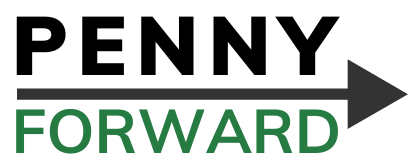Welcome to the fifth part in our five part series on ABLE accounts. In the last part, we explained when you may want to open an ABLE account for yourself or your child. In this part, we’ll discuss where you can find more information about ABLE accounts.
What is an ABLE Account?
Before 2015, blind people who received Supplemental Security Income (SSI), Medicaid, or other government benefits, were only allowed to have up to $2000 in savings to cover emergencies. This all changed with the passage of the Stephen J. Beck Jr. Achieving A Better Life Experience Act of 2014. The law allows states to establish tax-advantaged investment accounts that people with disabilities can use to save to pay for disability-related expenses including housing, transportation, medical expenses, education, and more. SSI and Medicaid recipients can save up to $100,000 in an ABLE account without impacting their benefits.
Where can I learn more?
The ABLE National Resource Center
The ABLE National Resource Center provides a great deal of information on ABLE accounts. It also provides information about, and links to, all of the state ABLE account programs available. It can be complicated to navigate, but it is generally accessible with a screen reader.
State Program Administrators
Each state program has its own web site. The ABLE National Resource Center has compiled a list of links to each state ABLE account program. While every state program has its differences, many state programs also have a great deal in common. We suggest investigating the program offered by the state you live in, since it may offer tax benefits that are only available to your state’s residents. You may enroll in any state’s program, though, so if your state doesn’t offer the features you need, you may want to investigate programs offered by other states.
Financial Advisors
ABLE accounts are relatively new to the financial services industry. In our experience, financial advisors who have experience with them are difficult to find. That doesn’t mean, however, that they aren’t a valuable source of information. If they’re willing to do a little bit of research for you, financial advisors may be able to help you decide which ABLE account is best for you. To decide whether a financial advisor’s advice will be helpful to you, we suggest asking them the following questions:
- Do you have any experience with 529A savings plans, also known as ABLE accounts?
- If not, what research will you do to determine whether an ABLE account is a good option for me?
The Social Security Administration
The Social Security Administration provides more information about ABLE accounts and how they impact Social Security and Medicaid benefits on their web site.
The Internal Revenue Service
The Internal Revenue Service offers more information about the tax benefits of ABLE accounts on their web site.
Conclusion
This concludes our five part series on ABLE accounts. ABLE accounts are valuable savings tools for many people with disabilities. We hope this series has answered some of your questions about them and how they can be used to help you to grow your or your child’s savings and become more financially secure.

Leave a Reply